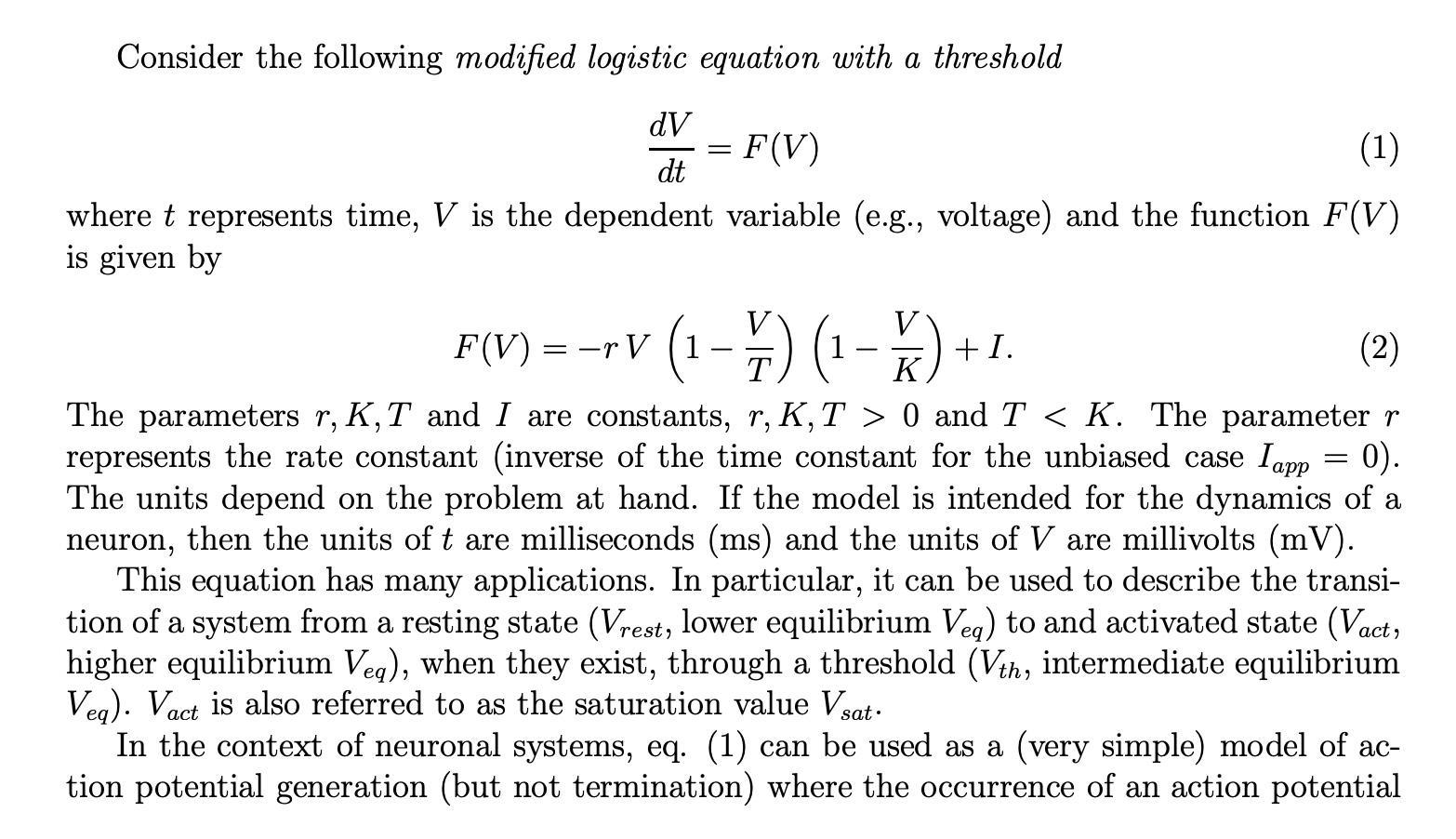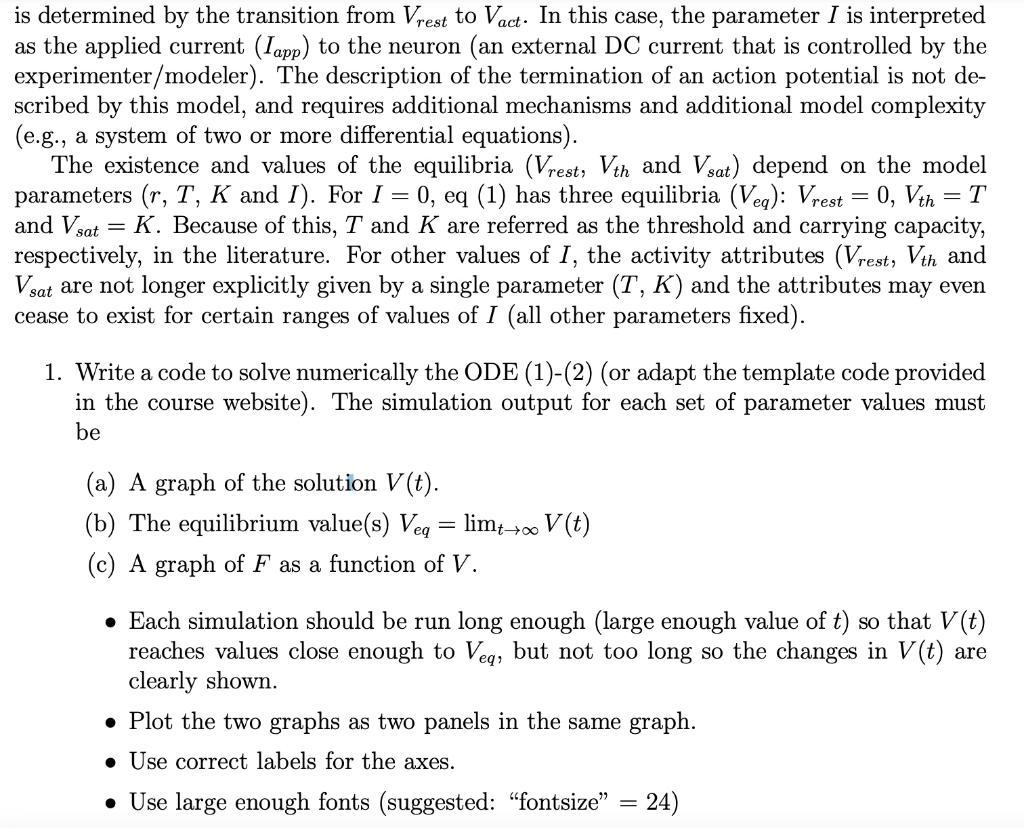Answered step by step
Verified Expert Solution
Question
1 Approved Answer
Consider the following modified logistic equation with a threshold dV dt (1) where t represents time, V is the dependent variable (e.g., voltage) and



Consider the following modified logistic equation with a threshold dV dt (1) where t represents time, V is the dependent variable (e.g., voltage) and the function F(V) is given by = F(V) == -r V V V ( - 1) (1 - 1) 1 T K F(V) (2) The parameters r, K,T and I are constants, r, K,T > 0 and T < K. The parameter r represents the rate constant (inverse of the time constant for the unbiased case I app 0). The units depend on the problem at hand. If the model is intended for the dynamics of a neuron, then the units of t are milliseconds (ms) and the units of V are millivolts (mV). This equation has many applications. In particular, it can be used to describe the transi- tion of a system from a resting state (Vrest, lower equilibrium Veq) to and activated state (Vact, higher equilibrium Veg), when they exist, through a threshold (Vth, intermediate equilibrium Veg). Vact is also referred to as the saturation value V sat. In the context of neuronal systems, eq. (1) can be used as a (very simple) model of ac- tion potential generation (but not termination) where the occurrence of an action potential + I. = is determined by the transition from Vrest to Vact. In this case, the parameter I is interpreted as the applied current (Iapp) to the neuron (an external DC current that is controlled by the experimenter/modeler). The description of the termination of an action potential is not de- scribed by this model, and requires additional mechanisms and additional model complexity (e.g., a system of two or more differential equations). The existence and values of the equilibria (Vrest, Vth and Vsat) depend on the model parameters (r, T, K and I). For I = 0, eq (1) has three equilibria (Veg): Vrest = 0, Vth = T and Vsat = K. Because of this, T and K are referred as the threshold and carrying capacity, respectively, in the literature. For other values of I, the activity attributes (Vrest, Vth and Vsat are not longer explicitly given by a single parameter (T, K) and the attributes may even cease to exist for certain ranges of values of I (all other parameters fixed). 1. Write a code to solve numerically the ODE (1)-(2) (or adapt the template code provided in the course website). The simulation output for each set of parameter values must be (a) A graph of the solution V(t). (b) The equilibrium value(s) Veq = limt V(t) (c) A graph of F as a function of V. Each simulation should be run long enough (large enough value of t) so that V(t) reaches values close enough to Veq, but not too long so the changes in V(t) are clearly shown. . Plot the two graphs as two panels in the same graph. . Use correct labels for the axes. Use large enough fonts (suggested: "fontsize" - 24) 2. Consider the following parameter values: r = 1, T = 0.25, K = 1. Perform simulations as described above for V(0) = 0.01 and three values of I: I = 0, I = 0.05, I = 0.1. 3. (Undergraduate level) Investigate the behavior of the model in terms of the model pa- rameters (e.g., plot graphs of the dependence of the attributes of activity as a function of the model parameters).
Step by Step Solution
★★★★★
3.43 Rating (153 Votes )
There are 3 Steps involved in it
Step: 1

Get Instant Access to Expert-Tailored Solutions
See step-by-step solutions with expert insights and AI powered tools for academic success
Step: 2

Step: 3

Ace Your Homework with AI
Get the answers you need in no time with our AI-driven, step-by-step assistance
Get Started


